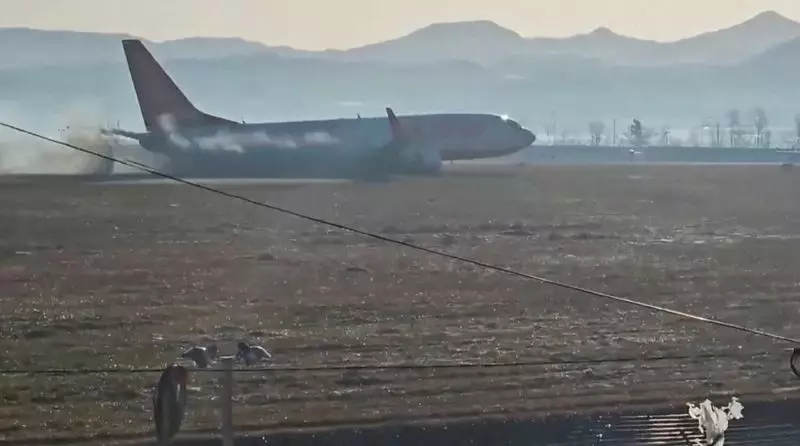The recent tragedy involving Jeju Air Flight 7C2216, which resulted in the death of 179 of the 181 individuals on board, has raised numerous questions about the causes and circumstances that led to this horrific accident. As authorities and aviation experts analyze the situation, the investigation delves into various potential factors, including the reported bird strike, the technical status of the aircraft, and the situational dynamics on the day of the crash. This article aims to explore the complexities involved in understanding this incident.
One of the primary focal points of the investigation is the reported bird strike that coincided with the flight’s distress signals. While bird strikes are relatively common occurrences in aviation, they rarely lead to catastrophic outcomes unless multiple critical failures occur in tandem. Trevor Jensen, an Australian aviation consultant, noted that the emergency services are typically well-prepared for situations involving belly landings, which suggests that the descent of Flight 7C2216 may have been unplanned.
The nature of the alert from the control tower also raises eyebrows. Though the pilots declared a mayday shortly after receiving the bird strike warning, it is ambiguous whether the aircraft had indeed collided with any birds. Experts like Geoffrey Thomas have pointed out that while bird strikes pose risks, they do not usually result in the total loss of an aircraft on their own. This observation implies a mosaic of issues may have contributed to the disaster rather than a singular triggering event.
Significant technical discrepancies have also come to light following the aftermath of the crash. Eyewitness accounts and video footage captured the moment the Boeing 737-800 made a belly landing without deploying landing gear, a situation that is by no means typical. Gregory Alegi, an aviation specialist, underscored that many mechanisms exist to lower the landing gear, suggesting that a failure of these systems would be highly atypical.
This leads to the essential question: why was the aircraft traveling at such high speed during the attempted landing? Why were the flaps, crucial for slowing down the plane, not deployed? Such neglect in operations could stem from various reasons—human error, mechanical failures, or other unanticipated complications—but the investigation has yet to clarify these uncertainties.
The Role of Weather Conditions
In addition to the potential bird strike and mechanical failures, investigators will also consider the impact of weather conditions on the flight’s operations. Although the Deputy Transport Minister Joo Jong-wan dismissed the airport’s runway length as a contributing factor, the specifics of the weather at the time of the accident remain pertinent. Poor visibility, sudden gusts of wind, or adverse weather conditions can critically affect an aircraft’s handling. In this case, further scrutiny is necessary to determine the tangible role weather might have played on that fateful day.
As per global aviation guidelines, South Korea is set to lead the civil investigation, with collaboration from the National Transportation Safety Board (NTSB) from the United States, where the Boeing 737-800 was manufactured. Typically, investigations into aviation accidents require months, if not years, of meticulous examination to comprehend the sequence of events that led to the crash fully. The flight data recorder and cockpit voice recorder were recovered, key tools that will help reconstruct the final moments leading up to the disaster.
Christian Beckert, a seasoned flight safety expert and Lufthansa pilot, emphasized the rarity of an aircraft landing without deploying its gear. Understanding what caused this anomaly will be crucial in guiding future safety protocols and preventing similar tragedies.
The investigation will also likely scrutinize the decisions made by the flight crew during the crisis. The captain had logged over 6,800 hours of flight experience, which implies a seasoned familiarity with emergency protocol. However, the first officer had considerably less experience, having only 1,650 flight hours. The dynamics of this pilot partnership during the emergency might shed light on the cockpit decision-making processes and how effectively they functioned under pressure.
The fact that the flight diverted to land in the opposite direction shortly after receiving a bird strike warning raises additional questions about situational awareness and workload management in the cockpit. Marco Chan, an aviation operations lecturer, noted that such a late change might elevate the cognitive load on the flight crew, thereby heightening the risk of errors.
What emerges from this tragedy is not just the need for understanding what went wrong but also a broader call for robust safety regulations within the aviation industry. Air travel has generally maintained a strong safety record, reinforced by the complexities of aircraft engineering and rigorous training for pilots. However, incidents like Flight 7C2216 serve as stark reminders of the interplay of technical challenges and human decision-making.
While the investigation into the Jeju Air disaster continues, the multitude of unanswered questions speaks to the intricate nature of aviation safety. It compels experts and authorities to examine every factor meticulously to best delineate how such tragedies can be prevented in the future.

